
An alternator with an internal regulator has simple connections. What comes next can be more challenging.
Our Finesse has separate starter and leisure batteries. When we bought her, she had one of those large rotary switches connecting the single alternator to either battery, both batteries or none. This was a level of complexity that was way beyond me at the time, so I asked (paid!) a marine electrician to install something simpler. He installed a split charge diode. So how did that go?
The split charge diode
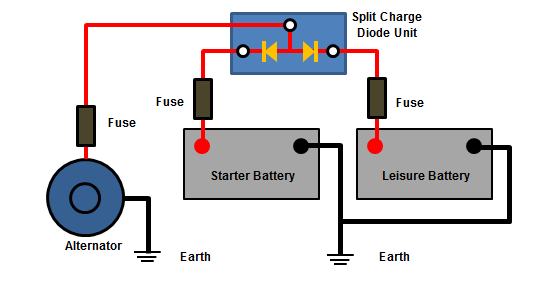
Diagram from https://www.12voltplanet.co.uk/
This unit actually contains two diodes, connected in parallel to the alternator output. Each diode connects to a different battery. In this brilliantly simple and robust solution, the two batteries cannot discharge into one another as the current is unable to run in the wrong direction through the diodes.
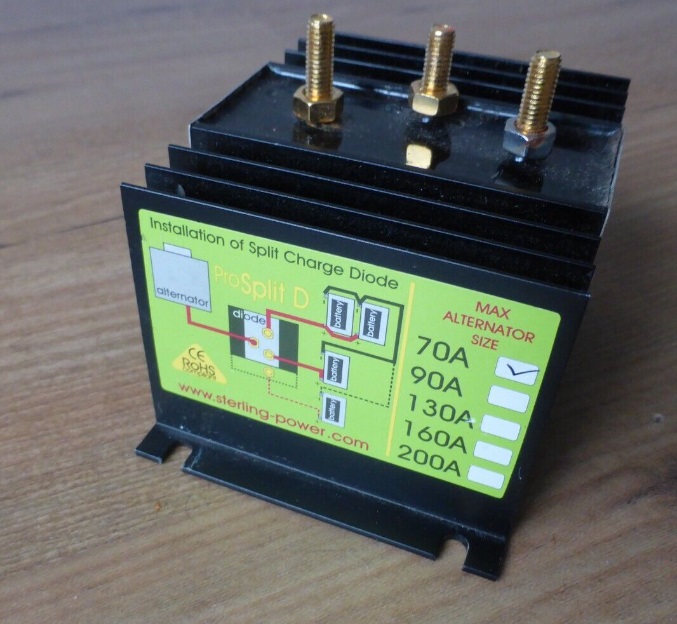
Split charge diode
The drawback is that, as a diode operates, it subtracts 0.7 volts from the alternator output. A typical alternator with an internal regulator outputs 14.4 volts; but when the split charge diode is used, each battery only receives 13.7 volts. This value is a typical ‘float’ or ‘trickle’ voltage that a battery charger would apply to keep a fully charged battery healthy. Deprived of the higher voltage, a partially charged battery begins to build up deposits of lead sulphate on its internal plates. These deposits reduce the capacity of the battery to hold charge.
After the alternator packed in during 2022, I treated the boat to an even more brilliant and (potentially) robust solution: a voltage sensitive relay.
The voltage sensitive relay
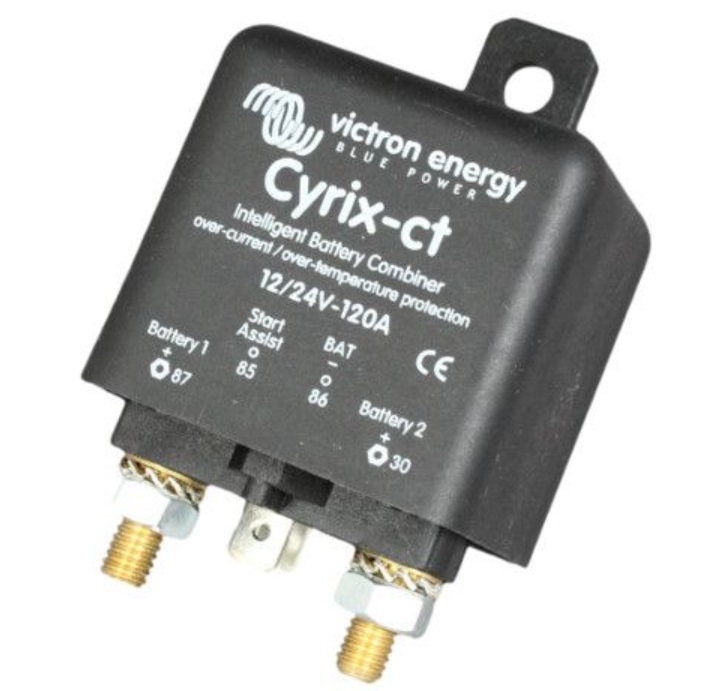
Voltage sensitive relay
This unit contains a relay which joins the batteries together whilst the input voltage from the alternator exceeds a modest threshold, so that both batteries are charged at the same time. Indeed, after charging has finished, the batteries remain tied together- providing some extra domestic capacity- until the starter battery voltage falls below a set value, at which point the connection between the two is severed, ensuring that the starter battery does not become too discharged to do its day job.
Unfortunately, this unit began to fall down on the job, forgetting to disconnect the starter battery. It was an intermittent fault, and I felt that I could ignore it for the time being whilst we left the boat in a summer marina mooring for two months with nothing left on except the bilge pumps on stand-by.
When we returned after two months, both leisure and starter batteries were completely flat. Not only had the relay failed to release the starter, its operating current draw (whilst connecting the batteries) is 0.220 amps. Over two months, this would equate to a discharge of over 300Ah. No wonder everything was flat.
In response, I replaced it with the ultimate brilliant and robust solution: a large rotary switch.
The rotary switch
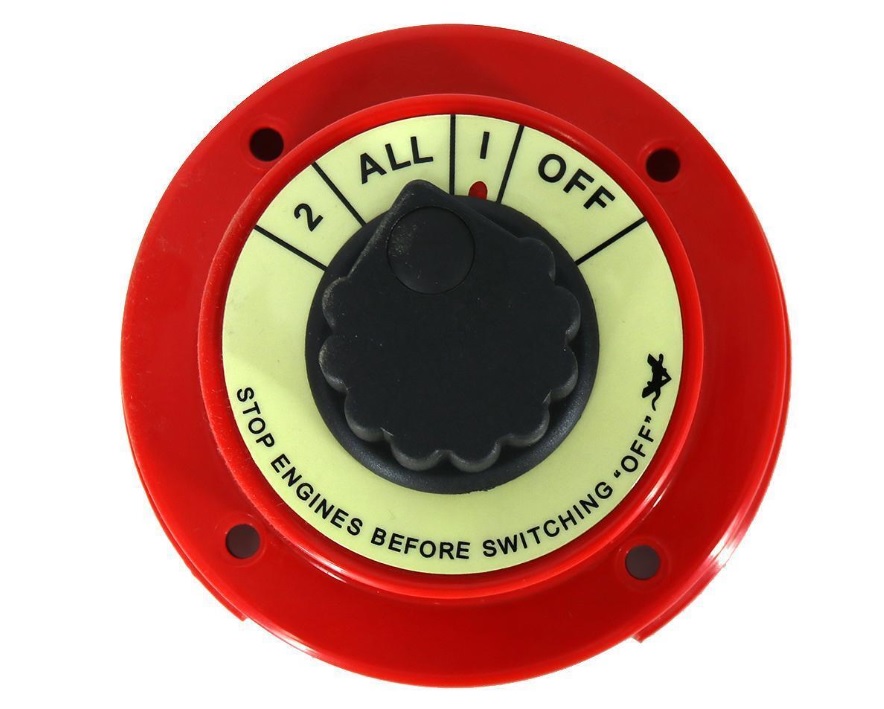
Welcome back- the good old rotary switch
Yes, back full circle. Not only does the rotary switch require no current to operate, it doesn’t steal any volts either. Its only drawback is that these switches are often mounted out of sight, and therefore out of mind. Ideally, you would use it to prefer the starter battery after starting, and the leisure battery thereafter. So where to put it?
At the time of writing, the switch is in the cockpit well, under the engine panel, a convenient and easily visible position. Of course, it is out in the weather; but the design has a cut-out underneath so that water can’t accumulate inside. Time will tell if there is any corrosion of the connections.
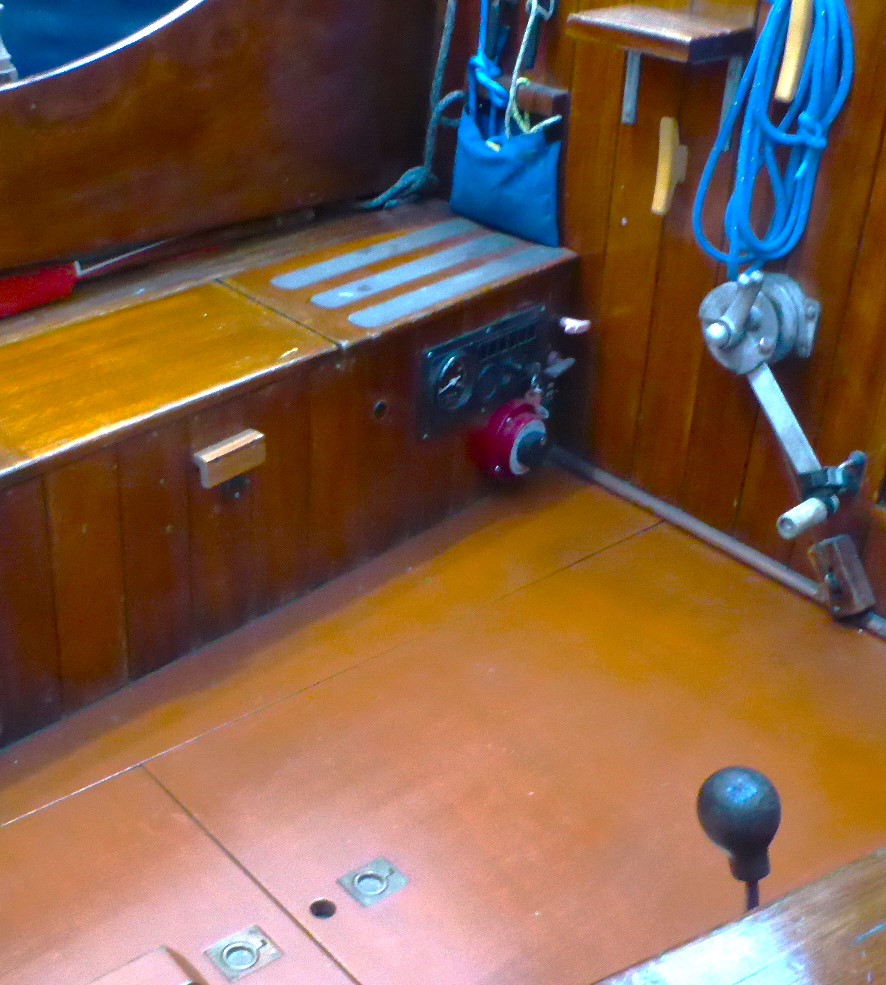
Visible. Vulnerable?
Oh, and there is one more advantage: if the switch position joins the alternator to both batteries, it also enables the leisure battery to help out the starter, should that ever be required.


